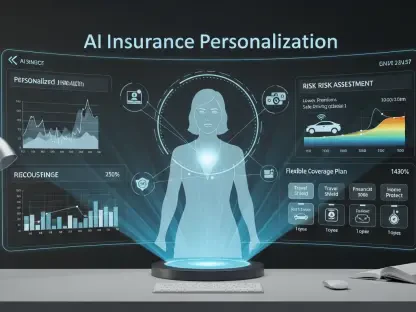I’m thrilled to sit down with Simon Glairy, a veteran in the insurance and Insurtech space with over three decades of experience. As a leading expert in risk management and AI-driven risk assessment, Simon has been at the forefront of transforming how motor claims are processed. Today, we’ll dive into the evolution of claims handling, the role of cutting-edge technology like AI in streamlining processes, and how digital tools are reshaping the customer experience in the insurance industry.
Can you give us a broad picture of how technology is changing the motor claims process, especially with companies leading the charge in innovation?
Absolutely. Technology is revolutionizing motor claims in ways we couldn’t have imagined a few decades ago. Companies are leveraging software and AI to connect insurers, repair networks, and customers seamlessly across the globe, operating in over 100 countries. The focus is on digitizing the entire journey—from the moment an accident happens to the final repair—making it faster and less cumbersome. We’re talking about tools that automate everything from damage assessment to scheduling repairs, which cuts down on paperwork and phone calls.
How has the claims experience evolved over your 35 years in the industry, and what challenges still linger?
When I started, everything was manual—handwritten forms, endless phone calls, and in-person assessments. Now, technology has brought in digital platforms and apps, but the core experience for many customers hasn’t shifted as much as you’d think. People still often call a center, answer a barrage of questions, and juggle multiple contacts for a simple fender bender. The challenge is that the process feels fragmented. Unlike banking, where transactions are instant, claims handling still lags in delivering that smooth, app-first experience.
What does the concept of a completely digital or ‘touchless’ claims process mean for someone who’s just been in a minor accident?
It’s about simplicity and speed. Imagine you’ve had a minor collision. Instead of calling your insurer and waiting on hold, you scan a QR code on your insurance card. That launches an app or mobile flow that already knows who you are—no logins or long forms. You answer a few basic questions, like whether it was an accident and how many cars were involved, and the rest is guided digitally. It’s a game-changer for taking the stress out of the situation.
Can you walk us through how data and images play a role in speeding up that digital claims journey?
Sure. Once you’re in the app, it prompts you to snap photos of things like license plates and the vehicle’s damage. Using third-party data, the system can pull up details about the car, insurance coverage, and even the other party involved, automatically filling out the first notice of loss. Then, with guided image capture tools, you take specific shots of the vehicle—like the VIN and each corner. AI analyzes those images to create a detailed repair estimate in minutes, which a claims handler can quickly review.
How much time does this digital approach save compared to traditional methods?
It’s night and day. Traditionally, a customer might spend hours or even days on phone calls, waiting for callbacks, and coordinating with body shops or rental car services. With a digital flow, that same process can be wrapped up in minutes. You’re not just saving time on the initial report; the app lets you pick a repair shop and book a rental car right there. Estimates that used to take days can often be approved in hours.
One area where AI seems to shine is in deciding whether a car is a total loss or repairable. How does that early decision impact the process?
That’s a critical piece we call intelligent triage. With just a few photos, AI can predict in about five seconds whether a vehicle is likely a total loss or if it should head to a body shop. Getting that decision right upfront saves everyone time and money. It means you’re not wasting resources on a car that can’t be fixed, or delaying a repair that’s straightforward. It streamlines the entire claims workflow from the get-go.
Another AI tool focuses on automating repair estimates. Can you explain how that benefits claims handlers and customers alike?
Absolutely. Instead of a human estimator starting from scratch, AI uses vehicle images to draft a full, line-by-line repair estimate. Claims handlers then just validate or adjust it, rather than building it themselves. This cuts down processing time significantly, often turning days into hours. For customers, it means quicker approvals and getting their car back on the road faster. It’s a win-win for efficiency and accuracy.
I’ve heard AI is also being used to assess the environmental impact of repairs. How does that work, and why is it important?
This is an exciting development. AI can analyze repair choices—like using new versus recycled parts or opting to repair rather than replace—and calculate the carbon footprint of each decision across all scopes of emissions. This gives insurers, repair shops, and even customers transparency on how choices affect the environment and costs. Often, sustainable practices also lower claim severity, which can help keep premiums down while supporting green goals.
What’s your forecast for the future of AI and digital tools in the motor claims industry?
I see AI and digital platforms becoming even more integrated into every step of the claims process. We’re moving toward a world where the entire journey—from accident to resolution—is predictive and proactive, with AI anticipating needs before a customer even asks. I expect greater personalization, where apps tailor solutions based on individual driver data, and deeper sustainability focus, with tools helping reduce the environmental impact of every claim. It’s an exciting time, and the pace of innovation is only going to accelerate.









